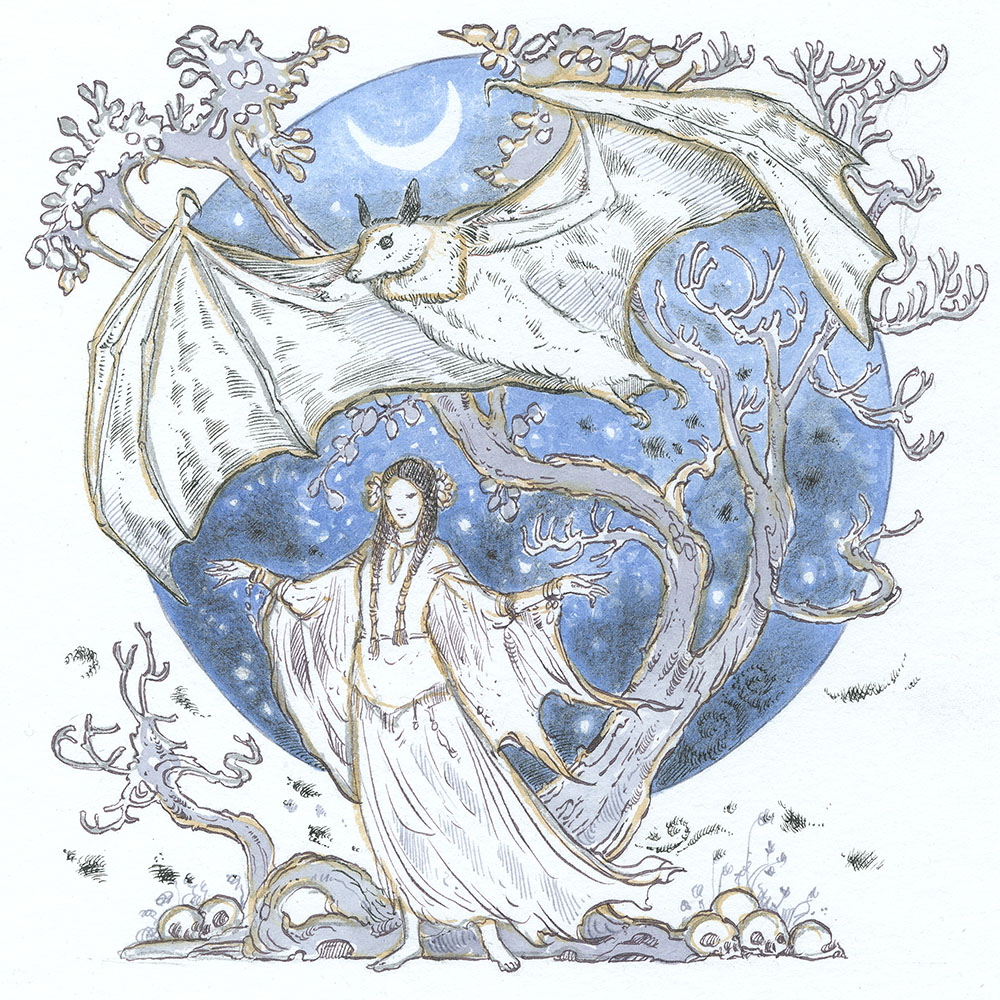Giant Golden Crowned Flying Fox
Acerodon jubatus
Status: Endangered due to deforestation and poaching for bushmeat
As the largest bats in the world, giant golden-crowned flying foxes inspire both fear and respect. As pollinators, they are a vital cog in the machinery of the rainforest ecosystem, dispersing the seeds of the fruit from which they feed.
One of the most feared mythic creatures of Filipino lore is the Aswang. The Aswang masquerades in the daylight as a beautiful maiden, but the reality is a vampiric witch who shapeshifts at night to the form of a bat. She glides under the moon and stars, and with her long proboscis reaches through the roof of the house of her victim and consumes their heart and entrails. Because an Aswang looks like any other human in the light of day, the way to discern their true identity is to gaze into their eyes, and if one's reflection is upside down, they are one of these supernatural beings.
Ironically, the fearsome stories inspired by the impressive size and wingspan of flying foxes are unsupported by the reality of their gentle fruit-eating diet, and their vulnerability with having their roosting places disturbed. There are some fishermen who do not fear flying foxes, and instead when they find the creatures roosting in the tangled mangroves above their fishing grounds, see them as an omen of a prosperous excursion.
References:
Ramos, M. (1969). The Aswang Syncrasy in Philippine Folklore. Western Folklore, 28(4), 238-248.
Low M-R, Hoong WZ, Shen Z, Murugavel B, Mariner N, Paguntalan LM, et al. Bane or blessing? Reviewing cultural values of bats across the Asia-Pacific region. Journal of Ethnobiology. 2021;41(1):18-34
Blumentritt, F. (2021). Dictionary of Philippine Mythology. Philippines: High Banks Entertainment Limited. 54-55.
